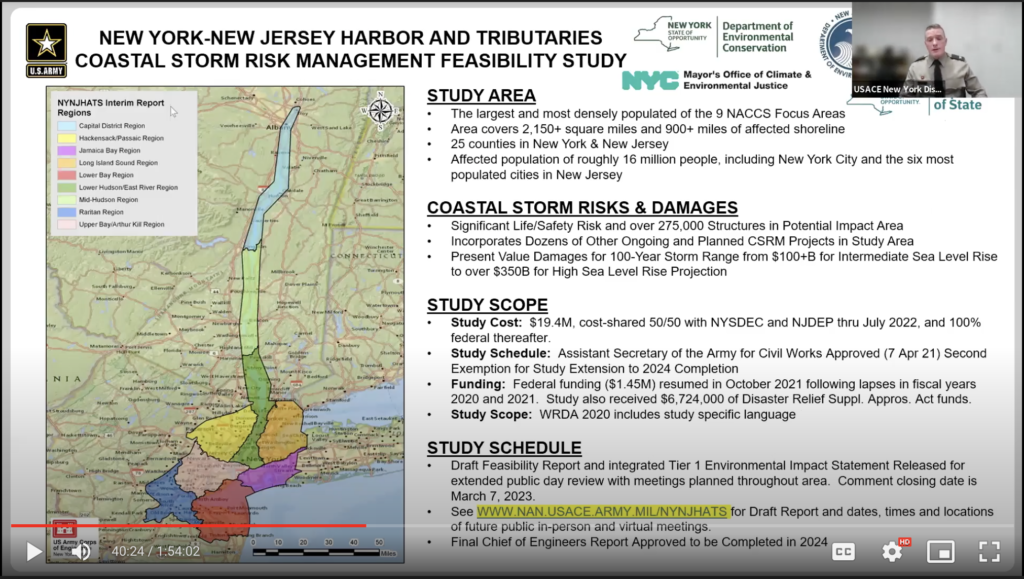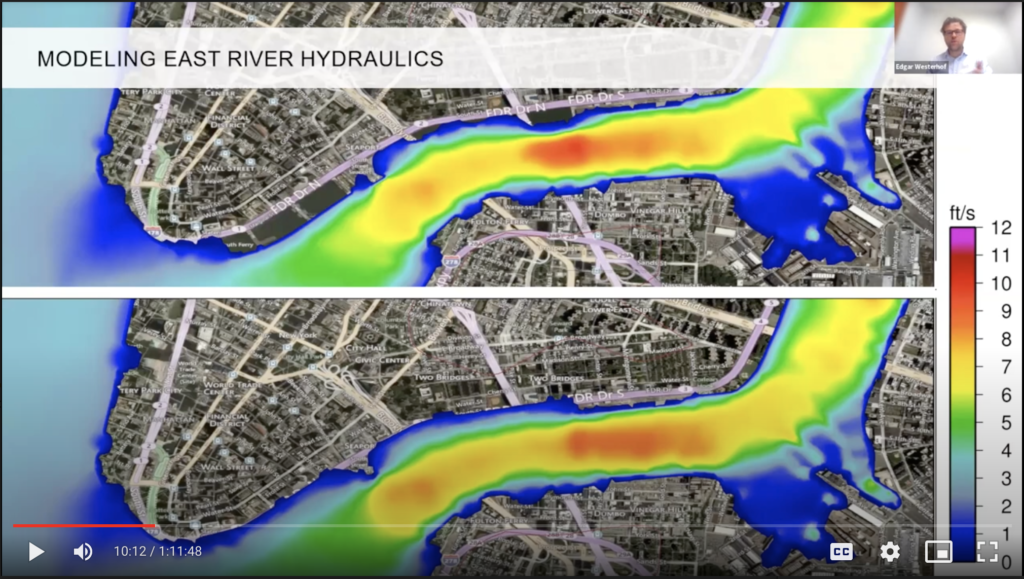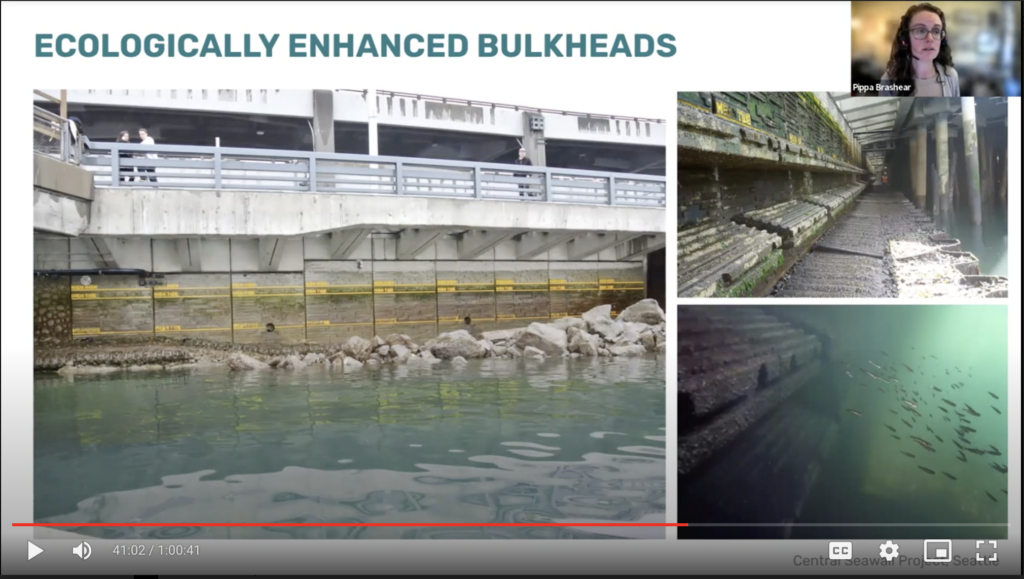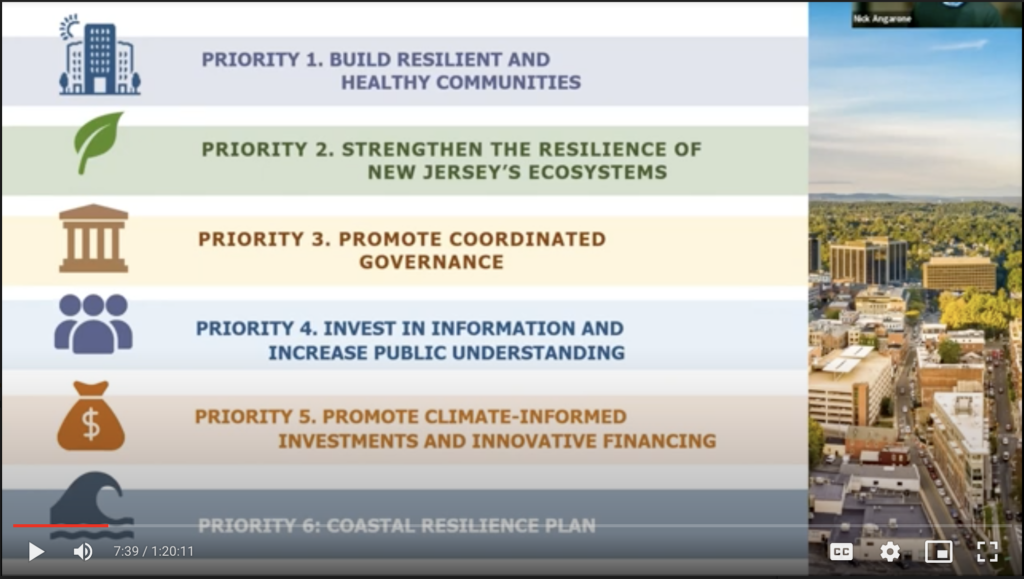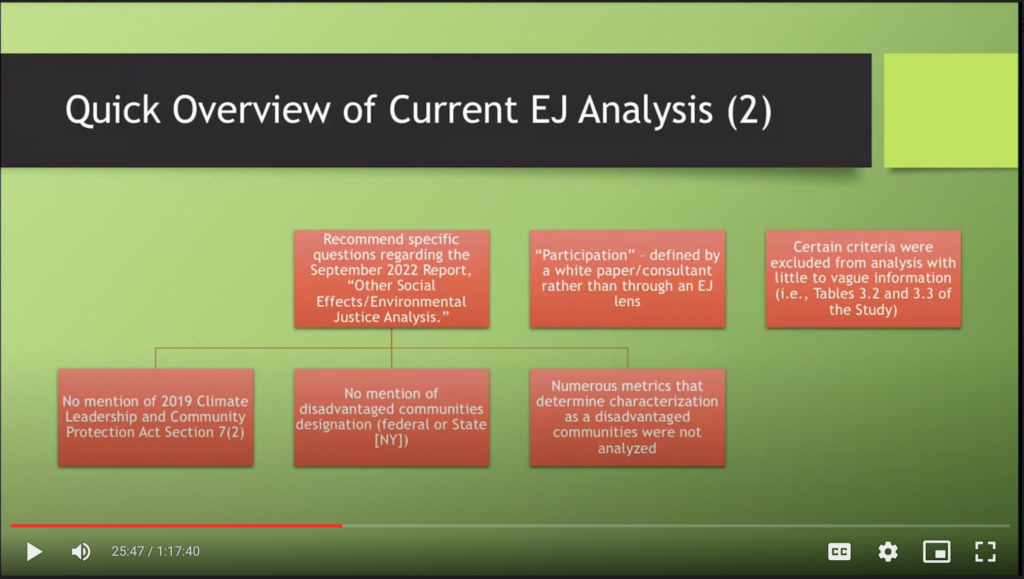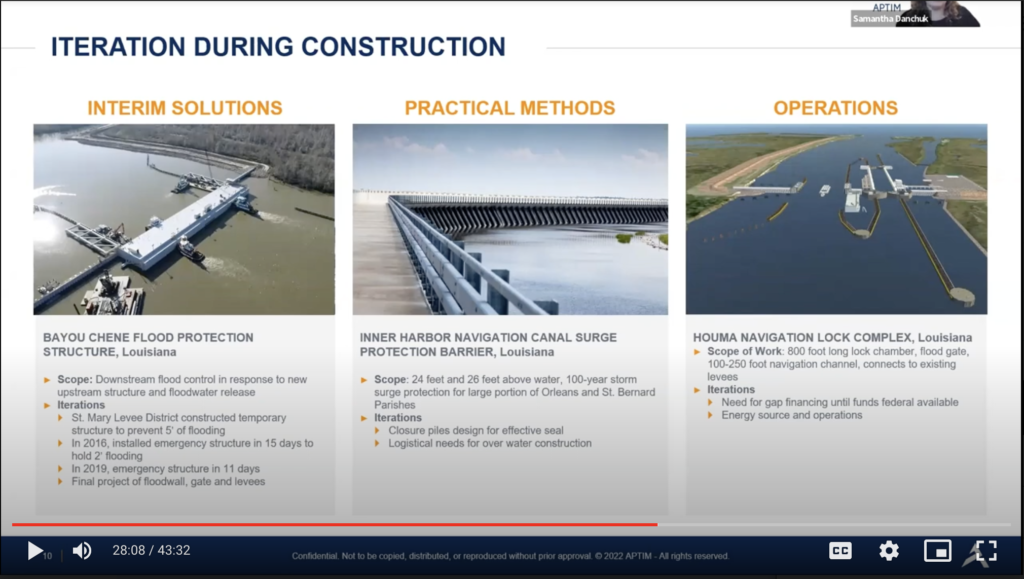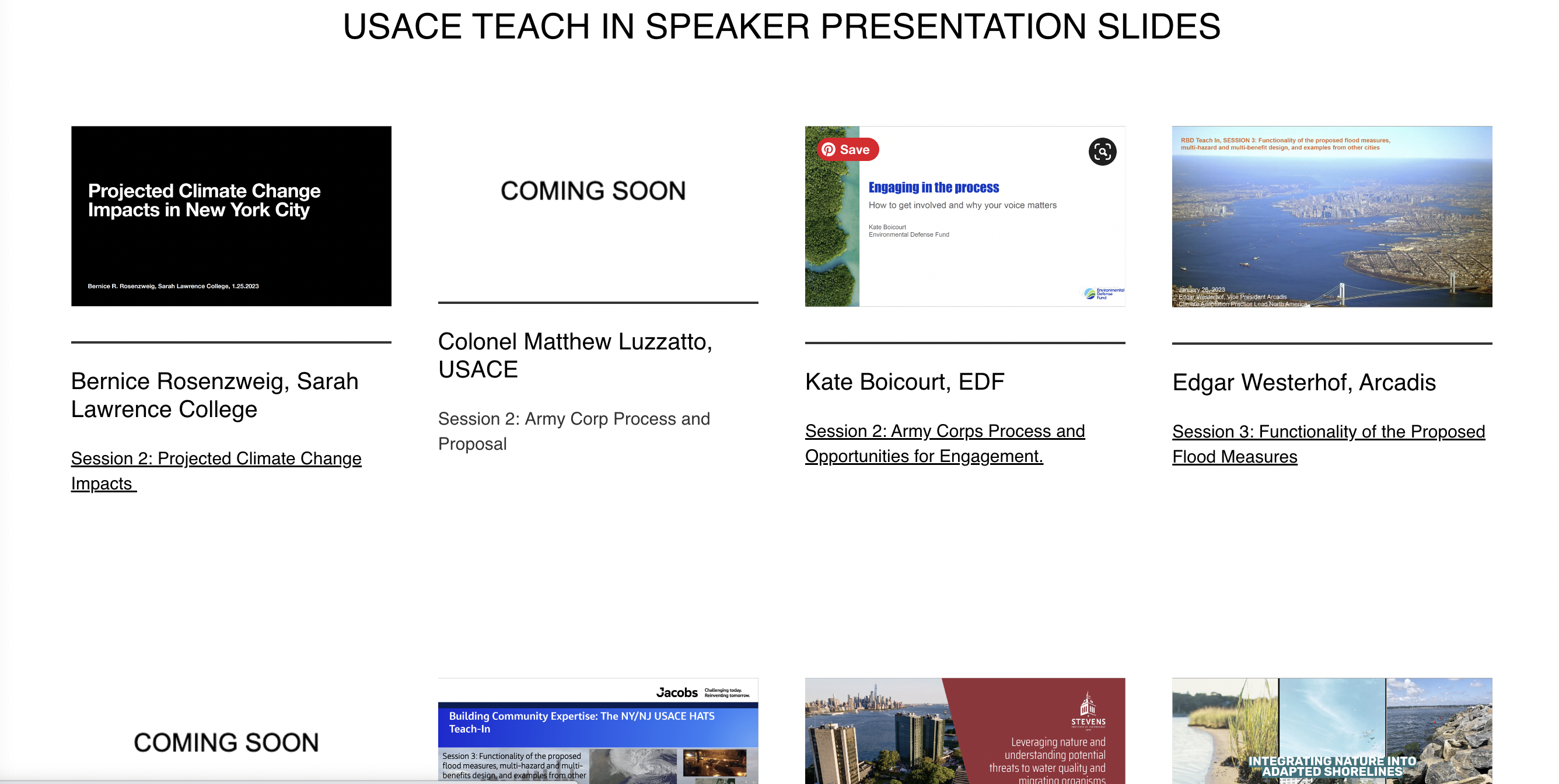Building regional expertise in community-centered climate adaptation
Bringing Technical Expertise to You
When the United States Army Corp of Engineers (USACE) indicated their recommendation from the NY-NJ Harbor and Tributaries Study study, a tentatively selected plan called “3B”. The USACE HATS preferred plan, though currently unfunded, can reshape our region for generations to come.
As the deadline to submit public comments approached, Rebuild by Design and its partners knew that organizations throughout the region have technical questions about the plan.
To create a better understanding of aspects of the USACE proposal that will impact local communities, Rebuild by Design built on the extraordinary work that has already by the Environmental Defense Fund, Rise to Resilience, and many of the organizations who are working together to convene experts to provide the technical assistance to local community organizations to build capacity to make informed comments.
On January 25, 2023, Rebuild by Design hosted Building Community Expertise: The NY/NJ USACE HATS Teach-In, a flood infrastructure teach-in to better understand the US Army Corps of Engineers’ proposed plan for flood protection in the New York and New Jersey region. This day-long event featured presentations and live Q+A sessions with Architects, Landscape Architects, Urban Designers, Academics, Coastal Engineers, Oceanographers, and other experts who can help us all understand the USACE HATS preferred plan.
This event, attended by nearly 400 people, built on the work of over 55 community organizations who identified their aspirations for coastal flood infrastructure, and submitted questions that they want experts to address.
To view the guiding principles co-developed by the community organizations, and the videos from the event, please scroll down.
Speaker presentations can be found here and bios found here.
WATCH THE VIDEOS:
Bernice Rosenzweig, Sarah Lawrence College
Colonel Matthew Luzzatto and other USACE representatives
Kate Boicourt, Environmental Defense Fund
Edgar Westerhof, Arcadis
Justine Shapiro-Kline, One Architecture & Urbanism
Luce Bassetti, Jacobs
Pippa Brashear, SCAPE Landscape Architecture
Phil Orton, Stevens Institute of Technology
Nick Angarone, NJ Department of Environmental Protection
Matthew Chlebus, NY Department of Environmental Conservation
Cherry Mui, NYC Mayor’s Office of Climate and Environmental Justice
Anthony Rogers-Wright, NY Lawyers for the Public Interest
Hilary Ho, Regional Plan Association
Johanna Lawton, Rebuild by Design
Bryce Wisemiller, Project Manager, U.S. Army Corps of Engineers, New York District
Olivia Cackler, Chief, Plan Formulation Branch, Planning Division, US Army Corp of Engineers, New York District
Ready to draft your comments for the USACE HATS public comment period? Check out the virtual workshop on how to write effective comments, hosted by the National Parks Conservation Association, the Rise2Resilience Coalition, and Rebuild by Design.
- Watch the workshop recording here.
- Download the presentation here.
- Download the Comment Writing Template here.
- Download the Your Story Your Ask Worksheet here.
Submit your comments by March 7th to nynjharbor.tribstudy@usace.army.mil
RESOURCES FOR COMMUNITY ORGANIZATIONS
- Google Drive for sharing comments + resources from past advocacy
- Notes + Q&A – Building Community Expertise: NY-NJ USACE HATS Teach-In (Pratt LEAP)
- NY-NJ HAT Study Storymap
- Map of who lives in the NYC floodplain
- NYC Comptroller’s Office: Climate Dashboard (specifically the map of ongoing resilience projects)
- Community Resilience Mapper
- Oct 2018 – comments on the study approach
- May 2019 – comments on the interim report
- February 2020 – memo re: halting of the study
- May 2020 – letter to Senate Committee on Environment & Public Works
- August 2020 letter regarding the expansion of authorization in WRDA
- December 2020 support for the passage of WRDA 2020
- May 2021 Comments on WRDA Implementation Guidance
- May 2021 letter from Congressional members re: WRDA implementation guidance
- 2021 letter from EDF focused on national policy
- May 2022 letter from the Rise to resilience coalition re: study finalization
- Policy directives from USACE HQ/Biden Admin
GUIDING PRINCIPLES FOR COASTAL INFRASTRUCTURE
On December 2nd, 2022 Rebuild by Design held a meeting with over 80 attendees, representing at least 56 organizations, to discuss their aspirations for large-scale, regional, flood protection. Rebuild by Design captured responses from the meeting and questionnaire, organized the responses into general categories and synthesized the shared ideas from each category to create principles.
The following principles for developing and implementing coastal infrastructure are derived from that process and should be applied to the USACE HATS process, and future climate adaptation projects and processes.
PROCESS FOR DEVELOPING COASTAL INFRASTRUCTURE
Engagement: The USACE process must have thorough community input during each stage of the project – planning, design, and implementation – with a particular focus on individuals and businesses who will be impacted by flooding, environmental justice communities, and youth. There must be robust engagement opportunities that are accessible in location, language, and clarity of information.
Transparency: The USACE process must be transparent in communicating all risks, trade-offs, beneficiaries, decision rationale, timeline as well as how feedback will be incorporated into the process, design, and implementation. The USACE must provide timely and detailed responses to inquiries and feedback during and outside of the public comment period. The role of non-federal partners should be explained.
Education: Educate communities with localized data of flood risk for each area where there is a proposed intervention that incorporates sea level rise, pollution and contamination, and the connection to cascading effects (such as health, economic, transportation, other climate hazards, etc.)
PROJECT DESIGN
Comprehensive: The approach should think big, be comprehensive, incorporate alternative options that include both structural and non structural solutions, be adaptable, prevent future climate challenges, align with existing or planned projects and serve the entire region.
Multi-hazard: Flood plans, projects, and measures must be comprehensive by addressing multiple climate and environmental hazards, including but not limited to heavy rainfall, sea level rise, heat, pollution, carbon mitigation, and CSO events, and shall be designed to provide co-benefits to the impacted communities.
Multi-Solutional: Where possible, flood adaptation measures must seek to address multiple needs of the community, including, but not limited to housing, pollution, food security, human services, and safety.
Workforce: The design, implementation, and maintenance of flood infrastructure measures must be coupled with investments in local workforce development.
Finance and Investment: Utilize traditional and non-traditional forms of finance that prioritize areas in greatest financial need, leverage the private sector, and support the long-term maintenance of flood infrastructure.
Efficacy: Provide robust evidence that the selected measures will work as designed.
JUSTICE AND EQUITY BUILT INTO THE PROJECT AND PROCESS
Equity: Flood infrastructure measures must prioritize the most socially vulnerable communities, namely environmental justice neighborhoods, low-income households, the elderly, climate migrants, and those who have been historically marginalized due to race and ethnicity.
Housing Affordability + Managed Retreat: All flood infrastructure plans must account for the impact of climate displacement on low-income communities to ensure every household is choices about their future to stay or to move away from the flood zone, by investing in retrofits for low-income households and creating affordable housing in low-risk areas. Limit housing in areas that do not have a long-term plan/infrastructure investment pipeline and ensure that zoning follows planned actions.
PROTECTION AND PROMOTION OF NATURE
Prioritize Nature-based Solutions: Flood Infrastructure that prioritizes the use of nature-based solutions over hard infrastructure, where feasible, which could include daylighting streams, using parks as water collection, and other “living with water” measures. Where hard infrastructure is necessary, use nature-based solutions to complement the proposed measures.
Waterfront access: Flood infrastructure measures preserve existing and create or improve new access to the waterfront and shoreline open spaces, particularly in areas of greatest need.
Ecology: Flood infrastructure measures must not have adverse impacts on the ecology and wildlife, or contribute to CSO’s.
PARTICIPATING ORGANIZATIONS FOR GUIDING PRINCIPLES
ADC50
American Littoral Society
Bayswater Civic Association
Belle Harbor Property Owners Association
Broad Channel Civic Association and
Bronx Council for Environmental Quality
Bronx River Alliance
Canarsie Community Development Inc. (CCDI)
Climate Adaptation Partners
Coney Island Beautification Project
EDF
El Puente
Friends of Cooper Park
Friends of Bushwick Inlet Park
Friends of Transmitter Park
Gowanus Canal Conservancy
Harlem River Working Group
Jamaica Bay Ecowatchers
Jamaica Bay-Rockaway Parks Conservancy
Long Island City Coalition (LICC)
Hunters Point Community Coalition (HPCC)
Lower Raritan Watershed Partnership
Metropolitan Storm-Surge Working Group
National Parks Conservation Association, Northeast Region
National Wildlife Federation
New York Disaster Interfaith Services (NYDIS)
New York League of Conservation Voters
New York Restoration Project
New York Sea Grant/Science and Resilience Institute at Jamaica Bay
North Brooklyn Pipeline Coalition
North Brooklyn Progressive Democrats
Hudson River Foundation
NYC H2O
NYC Soil and Water District
NYNJ Harbor & Estuary Program
Pioneer Works
Raritan Riverkeeper
Regional Plan Association
Regional Ready Rockaway
RETI Center
Riverkeeper
South Bronx Unite
Storm-Surge Working Group
Surfrider Foundation Foundation NYC
The Municipal Art Society of New York
The Nature Conservancy
Trust for Public Land
Waterfront Alliance
WE ACT for Environmental Justice
Academia
Columbia University – Columbia Climate School Resilient Coastal Communities Project, Center for Resilient Cities and Landscapes, Lamont Doherty Earth Observatory
CUNY
Monmouth University –Urban Coast Institute
Pratt Institute
Queens College/CUNY Graduate Center
Sarah Lawrence College
Stevens Institute of Tech
Community Boards + Government Agencies
Brooklyn Community Board 1
Bronx Community Board 8
Manhattan Community Board 2
Manhattan Community Board 4
Mayor’s Office of Climate and Environmental Justice
NJ DEP Division of Resilience
Queens Community Board 14
